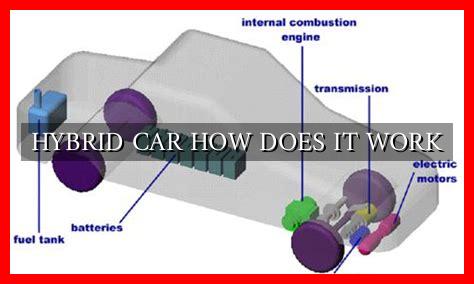-
Table of Contents
Hybrid Car: How Does It Work?
Hybrid cars have gained popularity in recent years due to their environmentally friendly nature and fuel efficiency. But how exactly do these vehicles work? In this article, we will delve into the mechanics behind hybrid cars and explore the technology that makes them unique.
What is a Hybrid Car?
A hybrid car is a vehicle that combines a conventional internal combustion engine with an electric propulsion system. This combination allows the car to achieve better fuel efficiency and lower emissions compared to traditional gasoline-powered vehicles.
Types of Hybrid Cars
There are several types of hybrid cars, including:
- Parallel Hybrid: In a parallel hybrid, both the internal combustion engine and the electric motor can drive the wheels simultaneously.
- Series Hybrid: In a series hybrid, only the electric motor drives the wheels, while the internal combustion engine acts as a generator to charge the battery.
- Plug-In Hybrid: Plug-in hybrids have larger batteries that can be charged by plugging into an external power source, allowing for longer electric-only driving range.
How Does a Hybrid Car Work?
Hybrid cars use a combination of technologies to optimize fuel efficiency and reduce emissions. Here’s how they work:
Regenerative Braking
One of the key features of hybrid cars is regenerative braking. When the driver applies the brakes, the electric motor acts as a generator, converting kinetic energy into electrical energy, which is then stored in the battery for later use.
. This process helps to recharge the battery and improve overall efficiency.
Electric Motor Assist
During acceleration, the electric motor provides additional power to assist the internal combustion engine, reducing fuel consumption. The electric motor can also operate independently at low speeds, such as in stop-and-go traffic, further improving fuel efficiency.
Engine Shut-Off
Hybrid cars are equipped with start-stop technology, which automatically shuts off the internal combustion engine when the vehicle comes to a stop, such as at a traffic light. This feature helps to conserve fuel and reduce emissions, especially in urban driving conditions.
Benefits of Hybrid Cars
Hybrid cars offer several benefits, including:
- Improved fuel efficiency: Hybrid cars consume less fuel than traditional gasoline-powered vehicles, saving drivers money on fuel costs.
- Reduced emissions: Hybrid cars produce fewer harmful emissions, helping to reduce air pollution and combat climate change.
- Quiet operation: The electric motor in hybrid cars operates silently, providing a smoother and quieter driving experience.
Case Study: Toyota Prius
One of the most popular hybrid cars on the market is the Toyota Prius. The Prius combines a gasoline engine with an electric motor to achieve impressive fuel efficiency and low emissions. Since its introduction in 1997, the Prius has become synonymous with hybrid technology and has helped to popularize hybrid cars worldwide.
Conclusion
Hybrid cars are a sustainable and efficient transportation option that offers numerous benefits to drivers and the environment. By combining the power of internal combustion engines with electric motors, hybrid cars can achieve superior fuel efficiency and lower emissions. As technology continues to advance, hybrid cars are likely to play an increasingly important role in the transition to a greener future.




